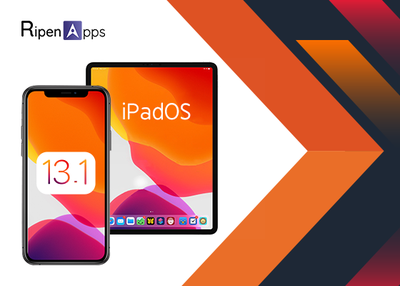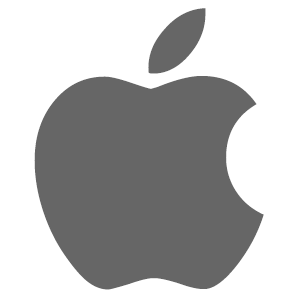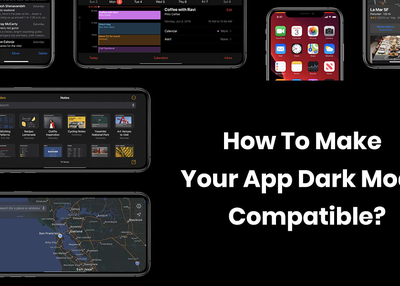
Apple iOS has evolved drastically over the years, and with new updates comes a whole new range of features and capabilities. In this article, we'll take a look at the history of Apple iOS from its inception up until iOS 13 - including a review of all the major updates and changes that have taken place. So whether you're looking to learn more about the development process behind Apple iOS or just want to see what's new in this latest version, read on! Get in touch with iOS development company in USA to get the best iOS app development services.
What was iOS 1?
iOS 1 was the original release of the iPhone, iPad, and iPod touch. It was released in 2007 and was based on the original Apple operating system, Mac OS X 10.4 Tiger.
iOS 1 was a major update to the original Apple operating system and introduced features such as multitasking, airplay support, and folders.
iOS 1 is now considered to be a vintage version of the iPhone and iPad, and it is no longer supported by Apple. However, you can still find iOS 1 devices in use by museums and historical institutions.
What was iOS 2?
iOS 2 was the first version of the iPhone and iPad App Store. It launched on June 29, 2007, and it originally only supported the iPod touch.
iOS 2 introduced a new app store design that allowed users to browse through apps by categories (News, Music, Movies, and so on). The app store also featured a new button that let you download apps without having to open the App Store app.
iOS 2 also included support for accessories such as headphones and the Apple TV remote. In addition, iOS 2 supported 3D Touch (which didn’t exist yet) and AirPlay Mirroring (which was introduced in iOS 8).
iOS 2 is an important milestone in the history of the iPhone and iPad App Store, and it paved the way for future updates and improvements.
What was iOS 3?
iOS 3 was released in 2007 and was the first version of Apple's mobile operating system. It introduced features such as multitasking, folders, push notifications, AirPlay, and more.
iOS 4 was released in 2009 and added features such as AirDrop, Game Center, improved battery life, and more.
iOS 5 was released in 2011 and introduced features such as Siri, iCloud Drive, geolocation support, and more.
iOS 6 was released in 2012 and introduced features such as photo editing tools, split-screen mode for apps, stronger encryption for data protection, and more.
iOS 7 was released in 2013 and added features such as a redesigned iOS App Store, new multimedia capabilities including AirPlay 2 and HomeKit support, new typography options for iOS app designs, and more.
iOS 8 was released in 2014 and added features such as a new Control Center design, enhanced Touch ID functionality, faster performance when downloading apps or making calls, improved voice dictation capability for iPhone SE users with speech recognition enabled,and more.
iOS 9 was released in 2015 and introduced features such as a revamped App Store design with enhanced search capabilities, a new “Hey Siri” feature that
What was iOS 4?
iOS 4 was the fourth major release of Apple's mobile operating system, iOS. It was released on October 12, 2010 and was available on the iPhone, iPad, and iPod touch.
iOS 4 featured a completely redesigned user interface which made using the device much easier. The home screen now featured three panels which could be customized to show different types of content.
Other new features in iOS 4 included support for multitasking, AirDrop file sharing, and Game Center achievements.
iOS 5 was released on June 19, 2011 and brought with it a new design for the home screen and an updated version of the App Store.
iOS 6 was released on October 17, 2012 and revamped the entire user interface once again. New features included an updated version of the Photos app which allowed users to manage their images more efficiently, as well as support for FaceTime video calls and AirPlay streaming from devices to speakers.
iOS 7 was released on July 25, 2013 and introduced several new features such as a redesigned App Store, Control Center customizations, Siri improvements, and faster performance when using apps.
iOS 8 was released on September 17, 2014 and introduced new features such as split View mode for iPad multitasking, Anim
What was iOS 5?
iOS 5 was released in 2011 and was the last major update for the original iPhone. It addressed many of the complaints users had about iOS 4, including slower speeds and general usability issues.
iOS 5 introduced a new look and feel to iPhones and iPads, as well as features like AirDrop, iCloud Drive, and Notification Center.
iOS 6 was released in 2012 and focused on bug fixes and improving performance. iOS 7 was released in 2013 and introduced a completely redesigned interface with a focus on speed and fluidity.
iOS 8 was released in 2014 and focused on enhancing security and user experience. iOS 9 was released in 2016 and introduced new features like Night Shift, Animoji, Group FaceTime, Memoji, AirPlay 2, CarPlay support, as well as changes to the App Store UI.
iOS 10 was released in 2017 and introduced new features such as Portrait Mode for selfies, ARKit 2 for augmented reality apps and games, Drag & Drop for files between apps, new Siri voices including American English (Alexa) and British English (Emmie), new Animoji characters including Panther, Dragonfly, Gorilla, Koala, Owl, Octopus, Vulture, Wasp, Wolfberry (
What was iOS 6?
iOS 6 was the sixth major release of Apple's mobile operating system, iOS. It was released on September 19, 2012, and it replaced iOS 5.
iOS 6 introduced a number of new features, including a redesigned Music app and a revamped Maps app. It also introduced numerous new user interface elements, including an updated Control Center and a redesigned App Store.
Overall, iOS 6 was a major update that improved the usability and functionality of many of Apple's mobile apps. If you are using an iPhone or iPad running iOS 6 or later, be sure to check out our guide to the latest iOS releases!
What was iOS 7?
iOS 7 was the latest version of Apple's mobile operating system. It was released in August of 2013 and replaced iOS 6.
iOS 7 brought many new features to iPhone and iPad users, including a redesigned user interface, enhanced security features, and new applications.
The new user interface featured a more colorful design and simplified menus. It was easier to navigate and made it faster and easier to find what you were looking for.
iOS 7 also included enhanced security features that made it harder for hackers to access your data. The new security features included a stronger password protection system, automatic lock screen settings, and more.
iOS 7 was a major update that improved the overall experience on iPhone and iPad devices. If you are an iPhone or iPad owner, you should definitely update to iOS 7!
How did Apple move to a 64-bit architecture for iPhone and iPad?
Apple has long been known for their high-quality products, and their latest creation is no exception. iOS 11 is a major update for iPhones and iPads, and it comes with some big changes.
One of the biggest changes is that Apple has moved to a 64-bit architecture for their devices. This means that the devices are capable of handling more tasks at once without running into any problems.
Another change is that iOS 11 comes with a new design language called "SiriKit." SiriKit is a new way for developers to create apps that can interaction with Siri in unique ways.
Overall, iOS 11 is a major update that brings many new features and improvements to your iPhone or iPad. If you're looking to upgrade your device, make sure to download iOS 11!
How does the ABionic chip work in the latest iPhones and iPads?
Apple has released a new iPhone and iPad that features an ABionic chip. This chip is designed to help make the devices more powerful and faster.
The ABionic chip is made up of several different parts that work together to make the device faster and more efficient. It helps to process data faster and also improves graphics performance.
The latest iPhones and iPads also come with a new operating system called iOS 11. This new OS features a redesigned interface and many new features. Hire dedicated resources to get your next app developed.
Did Apple copy Google’
When Apple was first developing iOS, they were heavily influenced by Google’s Android operating system. Google’s Android had become a huge success due to its open source nature and the many customization options that users had.
Apple initially copied many of these features when they developed iOS. For example, iOS allowed users to customize their phone with different wallpaper and icon themes. Additionally, the home screen was similar to Android with an app drawer at the bottom and an overview of all of your apps on the main screen.
However, over time Apple began to develop iOS in its own unique way. For example, Apple removed the app drawer in favor of a dock on the bottom right side of the screen. They also introduced a new interface for managing your apps called App Store Front. This interface makes it easier to find and install new apps.
Overall, Apple’s development of iOS shows how they can take ideas from other successful operating systems and adapt them to make their own product even better.
Article Source: https://www.deviantart.com/mobcoder/journal/The-Evolution-of-Apple-iOS-From-iOS-1-to-iOS-13-926354430




























